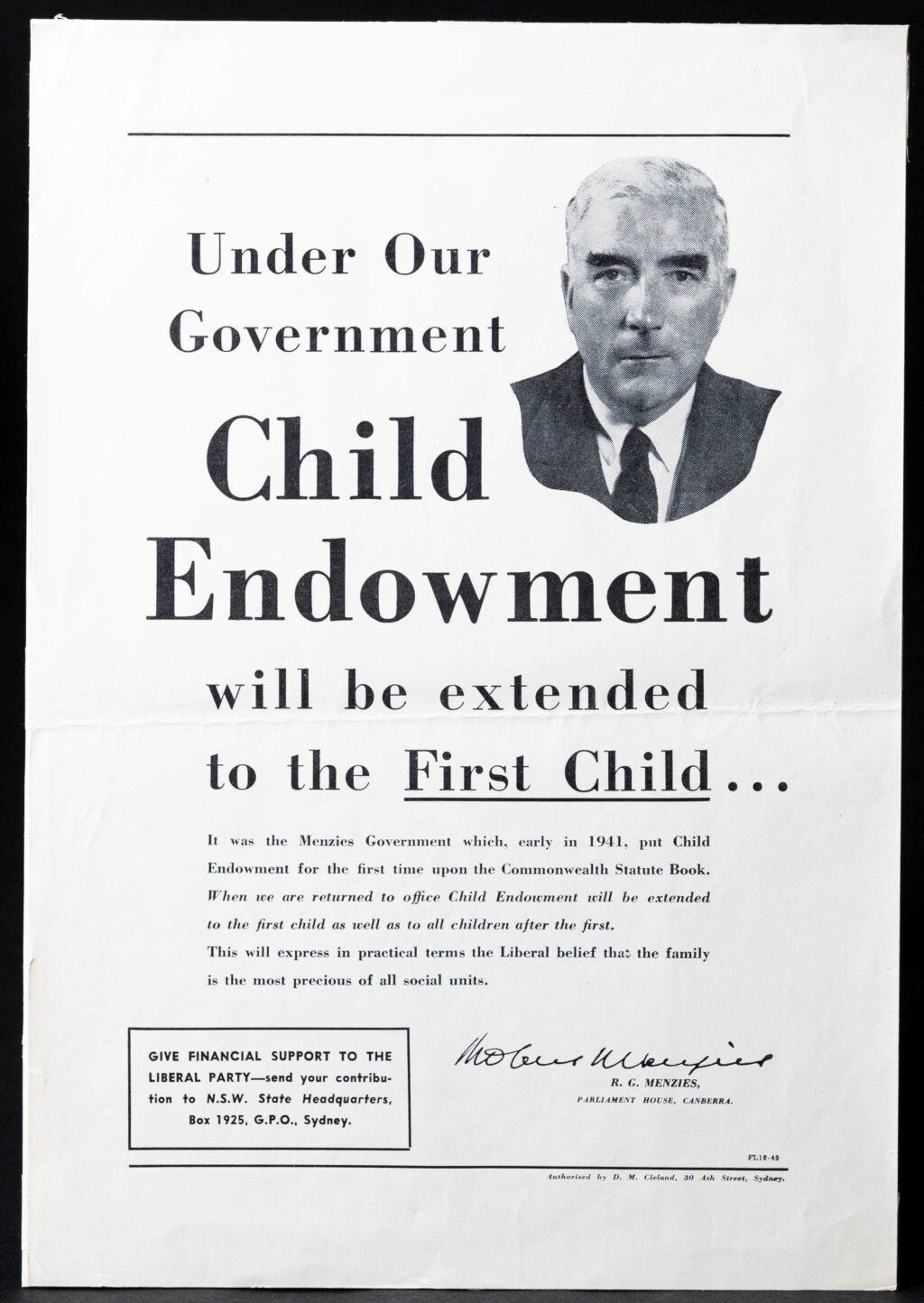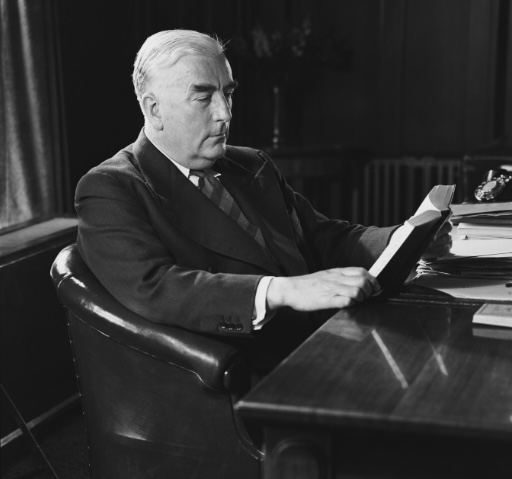On this day, 27 March 1941, Minister for Labour and National Service Harold Holt introduces the second reading of the Child Endowment Bill. One of the signature policies of the Menzies Government, the Bill introduced a payment of 5 shillings per week, for each child after the first under the age of 16 years, to be paid directly to the mother without being means tested. A highly popular move, in his second stint as Prime Minister Menzies would later expand the payment to cover first born children – a tangible commitment to the belief in ‘homes human’ that he had outlined during his famous ‘Forgotten People’ broadcast.
The idea of child endowment had a long pre-history in Australian politics. Controversial New South Wales Premier Jack Lang had introduced a version of the payment in his state in 1927, while in the late 1920s the Commonwealth Parliament held a Royal Commission into the idea. Ironically, the move had been opposed by the President of the Mothers’ Union Mrs. A. Arnold, both on the grounds that she objected to unmarried women receiving the benefit, and because giving money directly to the mother undercut a husband’s traditional role as the head of the household.
The main opposition however had been from the labour movement, who feared that a national scheme of child endowment would undermine the concept of the living wage. This had been established by the harvester judgement of 1907, and meant that the minimum male wage was maintained at a standard that would support a family of five. If people received payments based on the number of children they had, such a provision was unnecessary, and wages could be made to more readily reflect the outcomes of supply and demand (which the union movement objected to).
When Holt introduced the Bill, he painted it as an attempt to simultaneously prevent an inflationary wage spike and to construct a better post-war world in which evils such as malnutrition (which had been quite prevalent during the Great Depression) would be eradicated:
‘It is the hope of the Government that the national unity evolved by the present crisis will bring in another and even more fruitful period of social progress. We have learned to be proud of our “Australian standard of living”. We must keep it worthy of our pride. We sometimes like to think that the world centre of gravity may move into the Pacific. Such a change would impose upon Australia new responsibilities of social leadership. These aspirations are crystallized throughout the community around the word “reconstruction”. We are not fighting to go back to the world of 1939. If we are to meet the challenge of the dictatorships and evoke the most enthusiastic efforts of our people, we must show that our democratic society is a vital society capable of adaptation and progress.’
Holt would be given the monicker ‘the godfather of a million children’ for piloting the legislation through Parliament.
It was mother of twelve Enid Lyons who convinced Menzies to adopt the policy of expanding endowment in the lead-up to the 1946 election – and Margaret Fitzherbert has suggested that this was perhaps the first time an Australian political party had introduced a policy so directly targeted at women. Labor remained heavily opposed, with Prime Minister Ben Chifley labelling it ‘the biggest political fraud in history’ and suggesting that it was both unaffordable and would lead to a lowering of wages. After Menzies won the 1949 election, a Labor controlled Senate continued to make similar criticisms, but they ultimately allowed the legislation through as it proved to be too electorally popular to oppose.
Beyond being a vote winner, there were four main motivations behind the proposal. One was economic, that it was more logical to target people who had children for extra assistance rather than set up an entire industrial arbitration system around the assumption that people would have a specific number. Secondly, it would encourage population growth at a time when the Australian government believed that we needed to ‘populate or perish’. Another motivation was humanitarian, in aiding those with large families who were often subject to extreme poverty because of the number of mouths they had to feed (and there is an extent to which this was deliberately anti-sectarian, in targeting what was often an area of Catholic disadvantage). And finally, a recognition that child raising was a societal good, which benefitted the national interest, and which should be actively encouraged. As Menzies had put it in the Forgotten People, it was not just that families were a good thing, but they encouraged ‘noble instincts’ and created a healthy democracy in which voters would have a vested interest in ensuring the future was better than the present.
Child endowment was arguably highly successful in meeting these aims, as Australia’s birth rate reached a historic high of 3.548 in 1961. This success has meant that child endowment has had a long legacy of being emulated in Australian politics, with obvious reincarnations like Treasurer Peter Costello’s ‘baby bonus’ and the family tax benefit. Arguably however, there has been nothing to match the scale of the Menzies Government’s investment in Australian families.
Further Reading:
Margaret Fitzherbert, So Many Firsts: Liberal Women from Enid Lyons to the Turnbull era (Federation Press, 2009).
Sign up to our newsletter
Sign up for our monthly newsletter to hear the latest news and receive information about upcoming events.


